Amritsar
Ovenight to Amritsar via Delhi.
LHR (51°28'39"N 0°27'41"W)
DEL (28°34'07"N 77°06'44"E) 4191 mi
DEL (28°34'07"N 77°06'44"E)
ATQ (31°42'35"N 74°47'50"E) 257 mi
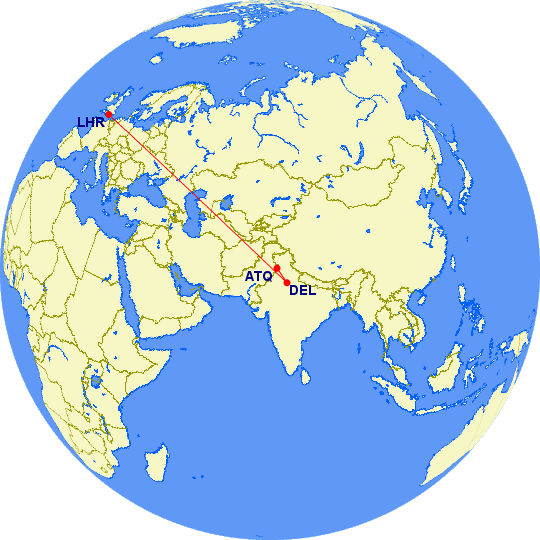

Amritsar
We had a few hours to recover before dinner and a trip to the evening Palki ceremony at the Golden Temple in the centre of Amritsar a short drive away. It is not very long before we all (six of us) realise that this will not be a usual sightseeing trip. This is the holy of holies for the Sikh religion and there are hundreds of pilgrims here.
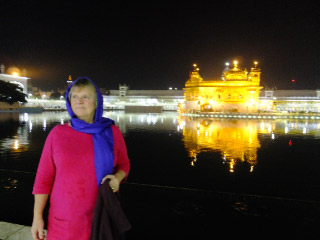
Perhaps this is a trip of a lifetime for them. Despite this Harri our guide says it is unusually quiet and suggests we try to get right into the Golden Temple so we join the queue. Inside a small orchestra, Tabla, Hurdy Gurdy, Sarood plays while several others sing prayers. Visitors scramble to the front and prostrate themselves in devotion. Passing through we turn upstairs where the huge book is kept. This is the subject of the ceremony tonight as every night, when it is moved from the temple into a room. in the main courtyard. Much singing and decoration is required to do this. With the excitement over, we slow down and circumambulate (word of the day) the pond. The occasional Sikh strips off and takes a dip. On exiting the water the process of changing out of the wet underpants to dry ones is an exact ritual which they all appear to have mastered.
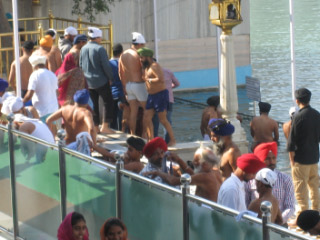
We return to our transport through the streets. There is an amazing contrast from within the temple, where every move, every prayer, every action receives another in reply and any transgression of the many rules is never thought of or seen, to the way they drive, ride and walk. All of us agree this is the scariest front seat experience we have seen. Ever.
Golden Temple
We go back again this time we see the dusty city by day.
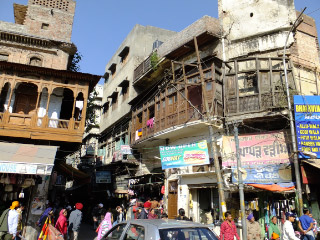
Indeed the queue to visit the temple is very long, but we are here to see the kitchens. The temple provides free meals to anyone and that means continuous service. There are two meal rooms with space for 1000 in each. They file in and get a metal plate with sections in it and a spoon. When one is full they shut the door and service begins. Meanwhile the other room is being cleaned and re set. In the kitchens huge pans are used.
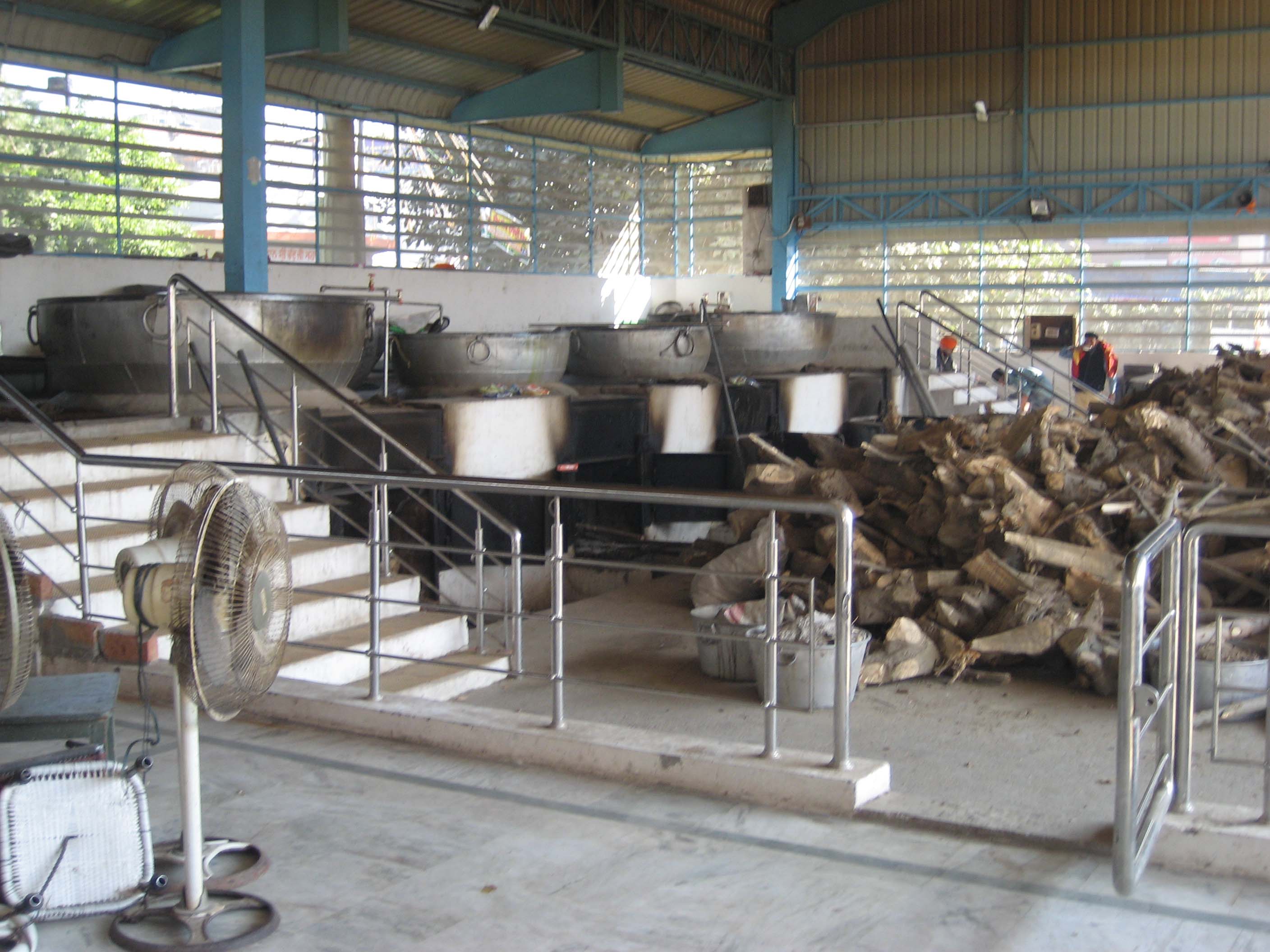
Twenty people could stand in one. Heated by wood or gas the cooking is on an industrial scale. Lorries constantly arrive with food. Everyone doing the work is a volunteer. Perhaps even more astounding is the clean up. The diners give their spoon to one man. Their plate is bashed against the side of a huge bin to remove any uneaten food. Then another crash as it is flung into a basket where someone stacks them. Next is a washing trough forty feet long with people either side they wash the plates and pass them to the second washing trough.
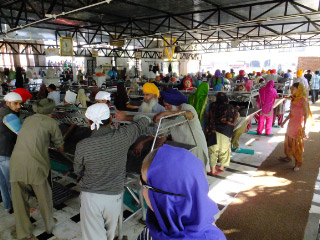
And so on until trough five. The noise is amazing, they are dried and stacked back at the start. We return passed Jallianwala Bagh.
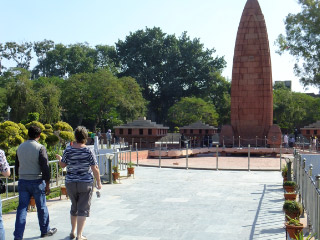
A beautiful garden with a sad history. Google will tell you more about General Dyer and what he achieved there. Lunch at the Crystal Restaurant. The off to the ‘Changing of the Guard’ ceremony at the India and Pakistan border.
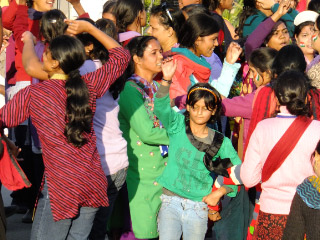
Not sure what I expected here but it was not Bangra music and a screaming front man. 'YAH LA YAH LA' he shouts and we all shout back JAI. The Packistans try to shout louder. Rubbish! We all HISSSSSSSSS then we turn up the bass again and the girls dance like Bollywood. YAAAA LAA JAI! The Indian flag is waved. Michael Palin visited the Packistan side but I think there was more fun in India.
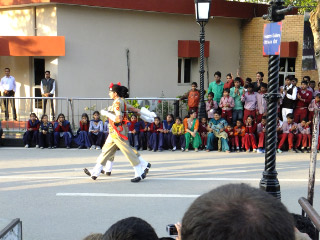
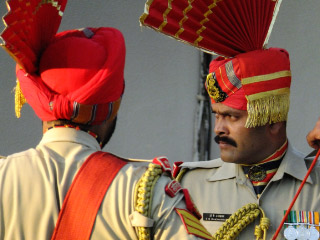
Rail and Road
Early morning train to Chandigarh. The city is dark, the traffic still hooting horns at 04:30. The station is alive. Queues everywhere and our guide bartering with the porters which we do need. The platform is half a mile long, we need to be at the far end. Eventually the carriage is unlocked for us, we are far too early but settle down. It fills up and we leave still in the pitch darkness. Nothing to see. If you do drift off you are awoken by the tea boy every ten minutes shouting 'chai chai chai chai chai'. So probably not one of the great railway journeys in the World. But an experience and needed to be done.
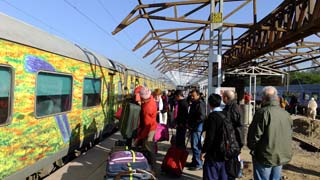
Then by road to Shimla on the Himalayas Express way. Snaking and climbing the views are amazing. We start to come across buildings at the side of the road. These are made from a level platform straight out over the sheer drop, then extended downwards two or three floors until some firm ground is met. As we climb the air thins and then larger groups of these constructions come into view. Our hotel being one of them.
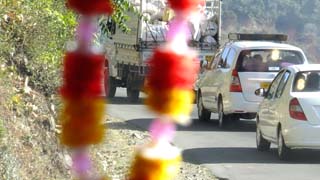
In the far distance we can easily see the Himalayas snow covered peaks.
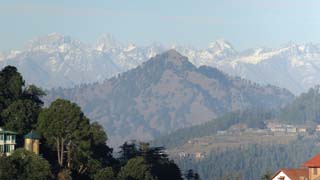
It has been a long day so we venture out to find the city square before Dinner. Hard going as you either walk up or down very steeply everywhere and the air is thin. Shimla was chosen by the Brits as the place from which to rule the entire Indian sub continent. That is Malaysia and Burma and so on. We will find out more tomorrow but until then we can muse over what seems to be an insane idea. OK, the weather in the summer may be pleasant and perhaps Delhi was stiflingly hot but here the snow comes in December and minus double figures is the best you can expect.
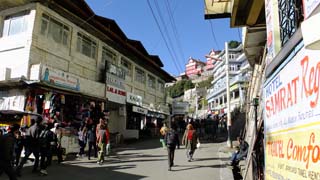
Simply walking a mile up (literally) the road is an effort.
Shimla
Today is a beautiful day and we go up to the top of the second highest ( of seven) hills that comprises Shimla. Here we find the palace built by the Brits in a mere four years.

Sorry, I lost my notes on the details but the architect was a Scot and he used the Highland design for the building, so it looks , well, plain daft stuck here. Nevertheless all the stones were transported half way across India and the wood panelling from Malaysia before all being brought to the top of this hill for assembly. The Brits needed the assistance of thousand of prisoners of war to do all this. It is now used as an University so tourists are restricted to the ground floor and gardens. Flattering to deceive and built to impress but who would see it? Well it hosted several war meetings and a list of Viscounts of India resided here. Leaving that behind us we go back to the square and the shops. The sky is blue, the Sun is bright white and we have a snack outside the best restaurant in town. It is a delightful place.
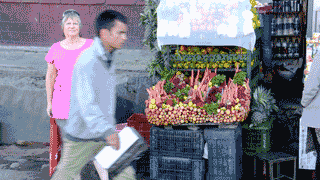
Toy Train
A leisurely start to get the toy train from Shimla to Solan. We find our names and seat numbers allocated on the list attached to the train. This descends from over 6000 feet to near sea level. A pleasant journey with many photo opportunities.
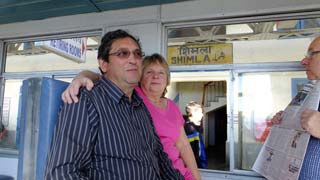
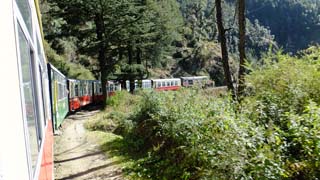
Keeping the doors open also helped. We continued to Kalka by road and at a lunch stop discover the local Plum Wine which we share a little over lunch. Taking an extra bottle with us and with the help of our army of porters joined the Shatabdi Express train to Delhi , with dinner on board which is where I am now. The train is at least twenty carriages long. Not all of them are the class we have which includes dinner. The service of the 80 meals in our carriage is done with aplomb as is the clearing up. After starters we have Dahl a veg curry some chapati and rice. A soured yoghurt which is very good and an ice cream. Eventually we arrive in New Delhi station. It is very busy. Cargo and passengers move about finding their train but we must find our transport. I follow the porter who has both our cases on his head ( and is carrying another) and seems to know where he is going.
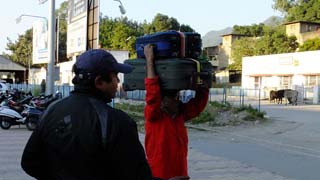
So much better train experiences today. There are some interesting statistics about the Indian railway system, I will leave you to Google them, but let me tell you the number of passengers travelling at any one time exceeds the population of Australia. Funnily enough we met an Australian on the toy train. Arrival at the hotel and check in it is now almost midnight. We are seeing many wedding parties both on the streets and in the trains and hotels. The horoscope indicates it to be an auspicious time to get married, so the 'season' is upon us. We casually discuss the pros and cons of the arranged marriages and perhaps all learn a little.
Delhi
If you knew Delhi like I know Delhi oh, oh , oh what a ..? The UNESCO listed Qutab Minar is truly amazing. The highest brick built tower in the world is both beautiful and imposing. It tilts at a small angle apparently in design. There are almost four hundred steps to take you to the top although that does not seem open. Standing beneath it the height is unbelievable.
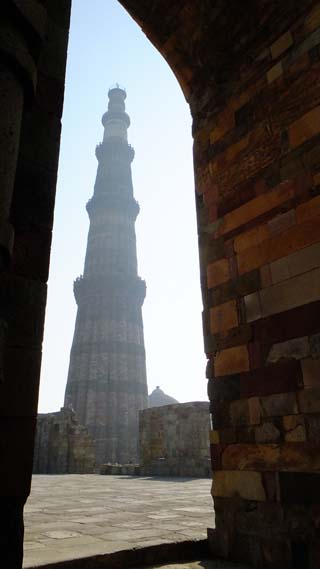
in another part of the gardens a smallish pile of rubble is as far as the following ruler got with building a second tower designed to be twice the height of the first one. Nice try. The Rail Museum is mainly outside with engines and carriages from India's history. All built in England or Scotland and transported here. "How did they come here, by sea"? we ask our guide. "By rail" he replies with a grin.
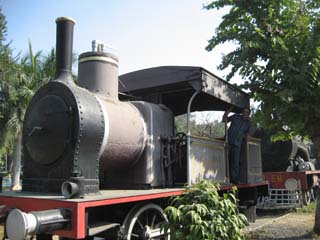
A pleasant spot but very poorly organised and a distinct lack of facilities considering there are about eight separate groups of forty school children here.
For lunch Hari took us into a Government complex. Here locals and foreign officers live and work in a semi secure environ. There is a shopping mall where the restaurant is located. Such good food! Second only to Shimla. On we went to the Humayun Tomb.
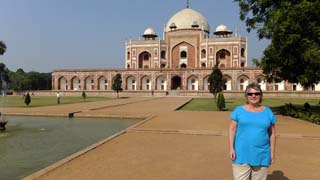
Looking like a copy of the Taj Mahal without minarets and one level less this was built eighty years earlier so the TM is probably based on this. The design of the tomb and gardens is prescribed by the Persian dictates with the water coursing around representing the confluence of four rivers. Last stop the National museum holding many splendid treasures. We are drawn to the special exhibition of interactive sound scape art. Each installation relying on an Ipad or PC it is a million miles away from the stone carvings in the rest of the galleries. Move the chessmen, touch the string and set of the music. As we make our way through other rooms on the way out we come across some artefacts in a room with only a guard. He is singing a beautiful song and it echoes around the room. Such an accompaniment not to be forgotten. Please see additional photos scroll right. Quite pleased with panorama shot. More to come.
Ganga Aarti

We arrive in Varanasi with a chance to recharge the batteries before an evening visit to the Ghats to see the Ganga Aarti ceremony which takes place every day. From our hotel by car to pick up a rickshaw. This ride is mental. Pedestrians, Cows, Dogs, bicycles, motor bikes (four up) lorries, cars and tuktucks come from behind, infront and all sides, very fast. It is a long way and necessary to brace your foot on the bar provided. Then the rest of the way on foot. Our guide is named Akhilies and walks calmly, almost serenely, through the crowds until we descend the steps of the Ghat and find our boat. We travel away from the ceremony towards the cremation area which operates 24/7.
We spend a lot of time here. 'Can you believe where we are?' we all ask ourselves. As we leave to go back to the ceremony there is a chance to make a wish with a floating candle.
Our boatman works his way to a fine spot from which to see and hear the ritual. Akhilies, having brilliantly arranged for us to arrive a little late, now plays the ace and we leave early. Back in the car we thank him for making this trip so easy for us and for protecting us from the many traps an unwary visitor may fall into.
Ganges
Early morning Sunrise Ganges boat ride. Visit Sarnath, one of the major sites of Buddhism and the associated Hinduism so we appreciate 'Away in a Manger' being played over breakfast. 'How is your food?' the waiter asks. 'Very nicey' I reply but he did not get it. There is a little less chaos on the trip back to the boat before Sunrise.
The true scale of the polution becomes apparent in the light of day. As we row along the Ghats asking the occasional question we see many rituals of complete submersion followed by half a pint of the grey water.
A photo for all Croquet players.
Back at the hotel for a snack and to watch Chelsea overcome a freak goal from Southampton in 12 seconds at the Bridge.
Kathmandu
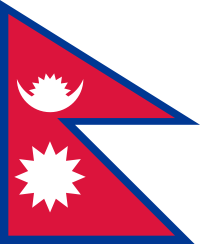

We fill our paperwork in and fly to Kathmandu where we are met by Roshan and taken to see some sights. It is a difficult place to get around as the traffic clogs up. We see the biggest Stupa in Kathmandu and learn about the prayer wheels and so on. Then we can visit the monastery.
Youths may join and spend a few years here later choosing to study religion fully and becoming a professional monk. A lesson is in progress;
there is chanting and bell ringing.
Kathmandu
Our bus takes us through the city as it wakes up. The residents are proud of their homes and like to keep them clean so they throw their rubbish out of the windows at night and the government men clear up what remains early in the morning. An early start for a flight over the Himalayas and a view of Mount Everest.
We are blessed with good weather for it and get a view from the cockpit.
On our return we have a tour of Durbar Square, the Royal residential quarter, local bazaars and Swayambhunath. This is the oldest Stupa in the city built high on a hill there are good views of the dusty city below.
Dhulikhel
It being the King of Thailand's birthday I wear the Yellow TShirt purchased on this day several years ago.
Pashupatinath is the cremation site for Kathmandu.
The principles are much the same as in India. It all gets done within a few hours of death. It is daylight and the details of the operation are more visible here. Bhaktapur is a city several Ks outside Kathmandu. It has many old buildings as well as new ones. Seems there may be a lack of control about town planning. We see temple after temple, this God that God. It is our last day we glaze over. Later we climb out of the smog for lunch at a hill top restaurant with a view of the Himalayas. This is a beautiful end to the holiday everyone feels this is what the ideal view of Nepal is. Back at the hotel it is Sunderland 3 Chelsea 4.
Home
Take off from Kathmandu affords many spectacular views of the mountains as we ascend.

Appendix
We visited three holy of holies: Amritsar for the Sikh, Varanasi for the Hindu and Kathmandu for the Buddhist. We brushed shoulders with the Pakistan Sikh at the border. We saw spectacles that astounded us and left behind us places we could not survive in without the umbrella of a 5 star hotel. This was a much more profound experience than out first trip to India. The gulf between the infrastructure in UK and India is so vast. What it would take to change somewhere like Varanasi to Lytham? It is infinitely unimaginable even leaving aside the shackles of the religious traditions which will not be broken in a million years. Here in UK we have climate change levy on our fuel bills and blue flag EU beach points. Our country is dwarfed by the size of the Indian sub continent. Perspective? We see lorries on our roads streamlined to reduce fuel consumption yet the Silk Road from China through the Middle East to Jordan and Africa or Turkey is full of antiquated engines carrying containers belching CO2 and smoke.
Bonus Photos
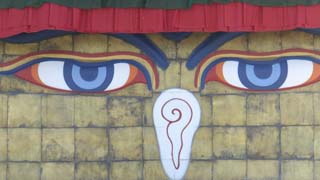
The Eyes of Buddha.
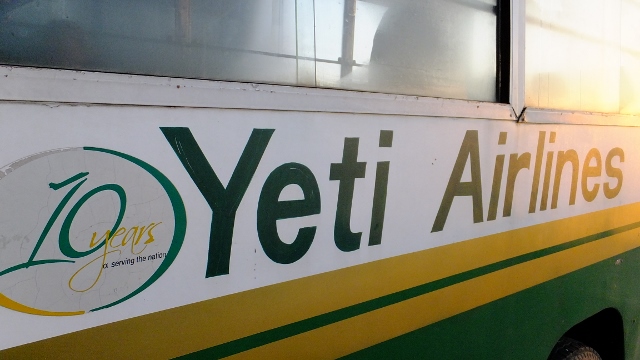
The service is Abominable. (Bert, I should point out we left the Punjab behind in Amritsar).
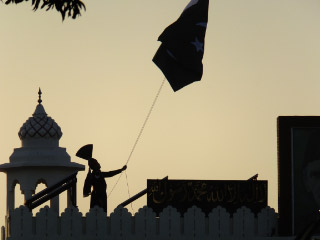
The Pakistan flag is lowered.

Our party at the tower in New Delhi.

Kathmandu Cremations.